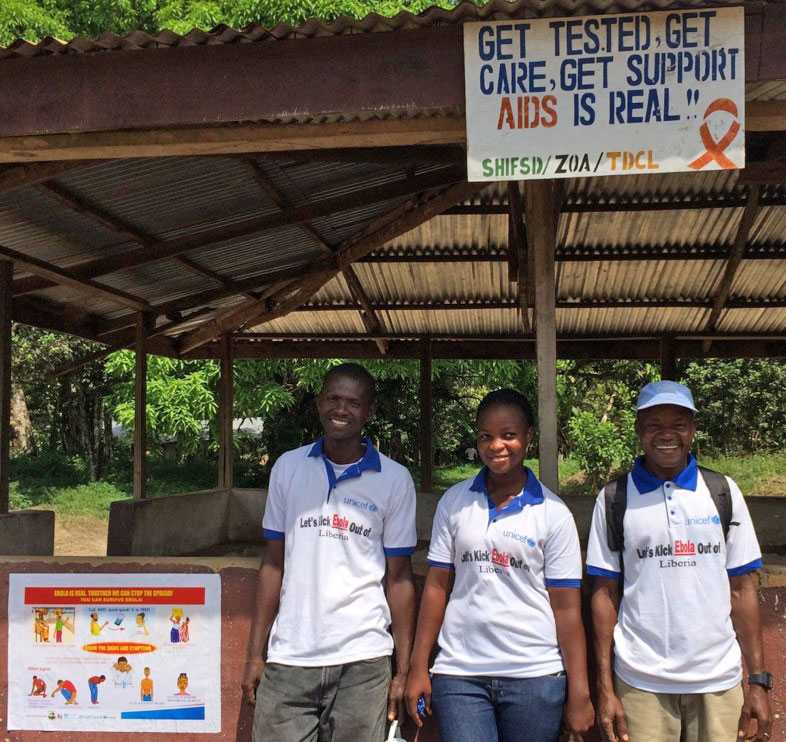International Emerging Infections Program
South Africa Regional Global Disease Detection Center
The International Emerging Infections Program (IEIP) was established to enhance South Africa’s capacity to detect and respond to emerging international threats through strengthening surveillance and public health research. In South Africa, IEIP supports and drives surveillance, research and dialogue to prevent, detect and respond to international disease threats in accordance with the US Global Health Security Agenda.
Program Background
Key Partners
- South African National Department of Health (DOH)
- National Institute for Communicable Diseases (NICD) of the National Health Laboratory Service
- University of Pretoria
- US Defense Threat Reduction Agency (DTRA) Cooperative Biological Engagement Program
- CDC’s Division of Global HIV/AIDS
The IEIP was established at CDC Atlanta in 2001, and was incorporated into the Global Disease Detection (GDD) program in Atlanta 2004 as one of the core capacities of each of the GDD Regional Centers. In July 2010, when the South Africa Regional Global Disease Detection Center (SARGDDC) was created, funding and Technical Assistance (TA) was provided to South Africa’s National Institute for Communicable Diseases (NICD) at the National Health Laboratory Service (NHLS) to enhance existing surveillance activities.
Program Focus
- Programs and activities of focus are identified based on the needs and priorities of South Africa.
- Strengthen laboratory systems and surveillance systems that can serve as the backbone for enhanced surveillance and contribute to national policies on control of diseases of public health importance.
- Support International Health Regulations (IHR) capacity building by applying CDC core expertise in a wide variety of public health capacities, including surveillance and risk communication.
- Provide a platform for collaborative international field research for host country priorities and CDC’s scientific programs, working closely with implementing partners and CDC subject matter experts.
Key Challenges
- Surveillance activities are fragmented across the public and private entities.
- IEIP has a broad regional mission, and to address the regional needs will require prioritized planning with current staffing and funding.
Current and Planned Activities
- Set up collaborative studies with regional countries to establish cross border febrile disease surveillance that identify dangerous and emerging pathogens including arbovirus and hemorrhagic fevers.
- Support WHO and CDC Ebola high-risk uninfected country teams to ensure preparedness locally and in the region for detecting and responding to Ebola and other dangerous and emerging pathogens.
- Collaborate with CDC Atlanta and the Robert Koch Institute to detect and respond to emerging diseases through establishment of febrile and respiratory disease surveillance and improved diagnosis in the region.
Recent Achievements

Community volunteers provide Ebola Virus Disease social mobilization messaging at a HIV testing station in Bong County, Liberia, November 20, 2014. Submitted by Williams Seymour – South Africa.
- As part of the GDD Cooperative Agreement, IEIP provided technical support to improve emergency response capacity and support for several surveillance projects, including the expansion of surveillance activities for viral hemorrhagic fevers in bats including Ebola and other international emerging zoonotic pathogens such as MERS Coronavirus (in collaboration with the Influenza SA program).
- Supported IHR sensitization and orientation trainings in South Africa’s provinces as part of a WHO stakeholder meeting with the National Department of Health (DOH) in 2014.
- Facilitated an import permit workshop with the DOH and CDC Subject Matter Experts (SME’s).
- Supports district-based training on epidemic preparedness and response, based on the principles of IHR’s Integrated Disease Surveillance and Response, in all 52 districts.
- Strategic planning is underway for the development of a National Disease Surveillance Policy to improve coordination of national surveillance activities and ensure closer alignment with the Global Health Security Agenda.
- Support of international efforts to control the 2014 Ebola outbreak, including:
-
Support the South African government efforts of preparedness and response through consultation and technical support
-
Act as member of the Ebola Multi-sectorial National Outbreak and Response team
-
Support training for Southern African Development Community (SADC) countries on Ebola preparedness for laboratories, port health and clinical stakeholders
-
Support the NICD mobile laboratory for deployment to Sierra Leone
-
Facilitate negotiations between DTRA and NICD for support for the Ebola diagnostic laboratory in South Africa, Sierra Leone and training facility for pre-deployment in South Africa
-
Deploy staff member to Brazzaville, Congo as a CDC liaison for the World Health Organization Ebola preparedness of high risk uninfected countries
-
Survey regional African laboratories in the Influenza and other zoonoses networks to assess the capacity to detect emerging zoonotic diseases and training needs related to the Ebola outbreak
-
Opportunities for Integration
- Utilize the GDD Technical Support Corps, made up of CDC SME’s, to increase the breadth of IEIP support.
- Build on existing regional relationships to provide support to neighboring countries to identify pathogens with potential to cause international outbreaks.
- Integrate activities with the One Health Program to address cross boundary emerging and reemerging zoonotic diseases that have been detected through importation, or potential introduction of infected individuals or vectors, including filoviruses (Ebola and Marburg), arenaviruses (Lujo and Lassa) and non-endemic arboviruses (Chikungunya and Dengue).
- Page last reviewed: June 2, 2015
- Page last updated: June 2, 2015
- Content source:
Global Health
Notice: Linking to a non-federal site does not constitute an endorsement by HHS, CDC or any of its employees of the sponsors or the information and products presented on the site.


 ShareCompartir
ShareCompartir